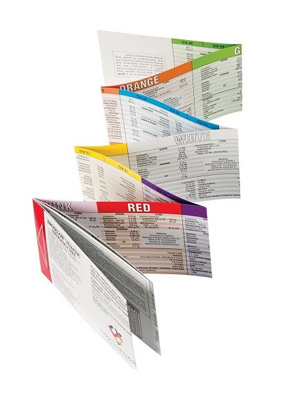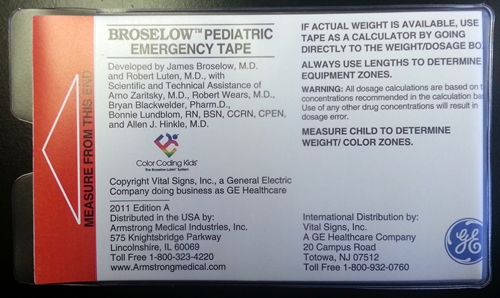

Comparing the utility of a standard pediatric resuscitation cart with a pediatric resuscitation cart based on the Broselow tape: a randomized, controlled, crossover trial involving simulated resuscitation scenarios. Agarwal S, Swanson S, Murphy A, Yaeger K, Sharek P, Halamek LP. Prevalence of childhood and adult obesity in the United States, 2011-2012. Analysis of parental estimates of children’s weights in the ED. Emergency medical services system changes reduce pediatric epinephrine dosing errors in the prehospital setting. Kaji AH, Gausche-Hill M, Conrad H, et al. Emergency weight estimation in Pacific Island and Maori children who are large-for-age. Internationalizing the Broselow tape: how reliable is weight estimation in Indian children. Ramarajan N, Krishnamoorthi R, Strehlow M, Quinn J, Mahadevan SV. Is the Broselow tape a reliable indicator for use in all pediatric trauma patients? A look at a rural trauma center.

Accuracy of weight estimation methods for children. Use of the Broselow tape may result in the underresuscitation of children. Nieman CT, Manacci CF, Super DM, Mancuso C, Fallon WF Jr. Comparison of Broselow tape measurements versus physician estimations of pediatric weights. Rosenberg M, Greenberger S, Rawal A, LatimerPierson J, Thundiyil J. Part 14: Pediatric Advanced Life Support: 2010 American Heart Association Guidelines for Cardiopulmonary Resuscitation and Emergency Cardiovascular Care. Kleinman ME, Chameides L, Schexnayder SM, et al. Medication dosing errors in pediatric patients treated by emergency medical services. Hoyle JD, Davis AT, Putman KK, Trytko JA, Fales WD. Finger counting: an alternative method for estimating pediatric weights. Young TP, Chen BG, Kim TY, Thorp AW, Brown L. Best guess method: a further external validation study and comparison with other methods. Pilot comparison of three cardiopulmonary resuscitation medication dosing strategies in overweight children. Pinchevsky LE, Pesaturo KA, Smith BS, Hartman CA. Evaluation of the accuracy of different methods used to estimate weights in the pediatric population. From 2010-2011 I completed a prehospital medicine/EMS fellowship under the medical direction of Dr.

Paul where I had the privilege to serve as chief resident in 2009. Residency training in Emergency Medicine brought me to Regions Hospital in St. For medical school I returned to NY and completed my MD degree at SUNY Upstate Medical University in Syracuse, NY. During undergrad I transferred my certification to Massachusetts and was employed by several private EMS agencies over the next 4 years.

I earned my EMT at 18 while I was employed by the Vestal Volunteer Emergency Squad as a BLS crew chief. My career in medicine started with my certified first responder-defibrillation (CFR-D) certification by NYS at age 16. I am a practicing Emergency Physician and the Assistant Medicl Director for Regions Hospital EMS in St. We host an EMS fellowship and are affiliated with Regions Hospital EM residency. Regions EMS is an academic department providing medical direction to over 1500 prehospital provders. There are now LMA sizes for each color listed. Green- Nasopharyngeal airway is now -26 FR The major changes are with drug dosing and alittle different estimate of weights for our ‘growing’ pediatric population. The new 2011 Braselow tape has now been released. Once the new tape is considered the reference we may want to consider to having the medics change the equipment to make it match the tape. The tape does recommend some changes in equipment. Equipment is done by ideal weight, so it is reccamended to still use the measured size for the child for equipment selection. There is a reccomendation that if you have an obese child to consider going up in size for medications. The sizing and placement of the colors have changed to go along with the increased weight of kids. I think using it as is for reference is fine. The biggest I see is the change from 15mg/kg/dose to 20 mg/kg/dose for Fosphenytoin and Phenytoin. Other changes include some small changes in medications. It has the new dosing for defibrillation that go along with the new AHA guidelines. The new Braselow tape has now been released.
Broselow tape 2017 changes update#
Regions Hospital Emergency Medical Services Critical Care Education Specialist gives us an update on the recently released 2012 Braselow tape.


 0 kommentar(er)
0 kommentar(er)
